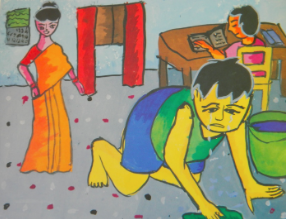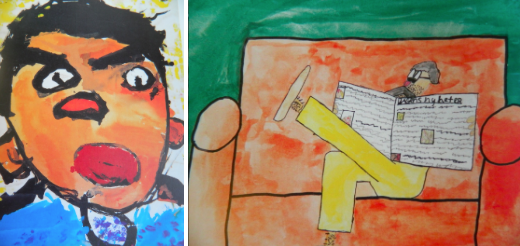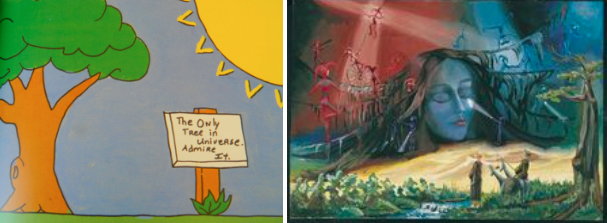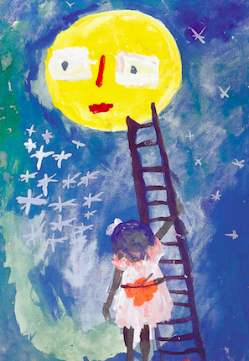In the leafy suburban outskirts of Oslo is a white house. It is almost as unassuming as the subject matter it contains, it is the International Museum of Children’s Art. Compared to the White House in Washington DC this one greets you with colourful giant snails, butterflies and a cow. This joyful expression of childhood and imagination does not however, preclude the Museum from being properly viewed as a centre of international and political concern. The Museum provides a unique opportunity to see and consider the perspective of children on international issues. It also gives a platform for children to be recognised in our society and works for the promotion of the rights of the child.
For too long we have dismissed the voices, wisdom and concerns of children, especially in politics, but this forgets that children are already involved in the ‘adult’ world. When we do remember, our responses are often paternalistic and disempowering. This is wrong as it is also their world and their future that is being dealt with. Children are key stakeholders in many serious international issues, for example concerning work, slavery and violence and when it comes to child labour and child soldiers we are quick to voice outrage and concern as these practices are seen as abhorrent abuses of the rights of the child and the sanctity of childhood. Children are also at the centre of issues such as education, health, climate change, immigration and population growth. Acknowledging that children are involved in international issues places the need and value of showcasing their views and contributions, through their art, squarely in the field of foreign affairs. Further, it seems absurd that the International Museum of Children’s Art in Oslo is the only one like it in the world. This is especially because children produce art on a prolific scale and the ability and time to do this epitomises the realisation of the ideal childhood that the world invests so much into protecting and developing.

The Museum hosts exhibitions inviting contributions from children around the world on different themes. In this way it captures the perspectives, concerns and understandings of local and global issues in a unique way. The Museum is currently exhibiting the best works from the last three decades to celebrate its 30th birthday. This special exhibition and the Museum’s archives provide valuable insight into how time, technology, perspectives and cultures have both changed and collided across the globe. For example two exhibitions on fatherhood were done in the last 30 years allowing for a comparison of how family roles have changed in this time. Whilst the newspapers that previously featured were replaced with computers and phones, depictions of anger and fear were unfortunately common to both eras.

What remained with me as I wandered through the galleries was the ability for children to distil very complex issues into a clear sentiment. Pieces from exhibitions on environment and disaster highlighted how the challenges of climate change are already felt very seriously in the lived experiences of those who will be affected the most. Some pictures showed the grave concern and hopelessness of the issues whilst others had a quixotic tone. The greed and waste that have so clearly contributed to climate change are outlined so simply that you can’t avoid this truth staring you in the face. The works and indeed the gallery shone a light on how adults are often indifferent to the concerns of children and the type of world they want us to leave them.

In displaying contributions from around the world on single topics, the Museum provides a rich resource for understanding different cultures and nations. Children’s art reconnects us to the basic truths of our shared existence on the planet, and the gallery is a beautiful reminder of the importance and value of giving children the respect they deserve and a voice in matters of international concern.
Taminka Hanscamp
Photo Credit: Pictures 1-5 Permission from the International Museum of Children’s Art
Cover image: 5 years, India, ‘I am going to the Moon’ International Museum of Children’s Art Used with Normal One Time Permission







